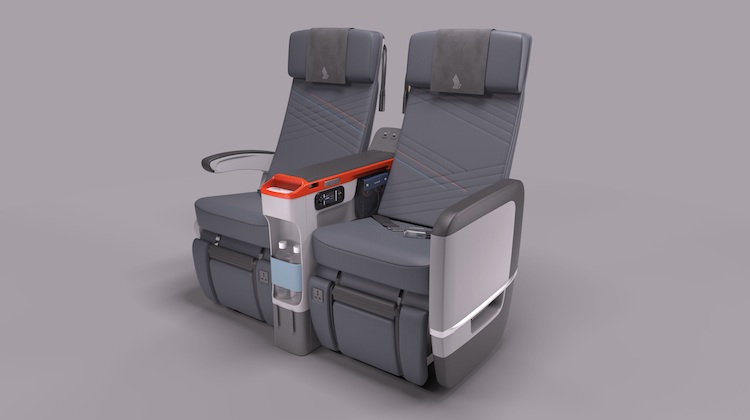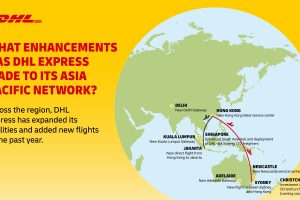Singapore Airlines has selected Singapore-Sydney as the first route for its new premium economy product to be installed on its fleet of Airbus A380s and Boeing 777-300ERs from August.
The carrier joins a growing list of airlines, including Qantas Airways, Cathay Pacific, Air New Zealand and British Airways that offer the cabin, positioned in between economy and business class.
But the Singapore Airlines offering will only be available to Sydney passengers on two of its four to five daily flights to start.
The carrier has yet to announce a launch date for its daily 777-300ER flight from Singapore to Melbourne. It does not have plans to introduce the product to any of its flights between Singapore and Brisbane, Perth, Adelaide and Darwin on which it uses smaller aircraft.
“We are delighted that Sydney will be the launch market for our new premium economy class,” a Singapore Airlines spokewoman said. “Whilst we have yet to determine at what stage it will be deployed to Melbourne, we’re hopeful this move will further our premium positioning in Australia.”
The premium economy seats, broadly in line with rival products, will feature a 38 inch seat pitch and a width of between 18.5 to 19.5 inches, including an 8 inch recline and a 13.3 inch high-definition monitor for in-flight entertainment.
Customers will be offered noise cancelling headphones, champagne throughout the flight and the choice of three meals on board or the ability to pre-book a meal.

Singapore Airlines will also be adding the product to destinations like Beijing, Delhi, Hong Kong, Frankfurt, London, Mumbai, New York, Shanghai, Tokyo and Zurich allowing passengers with two sectors to enjoy the service on both flights.
By early September, premium economy will be available from Sydney to London and Sydney to Hong Kong. By the end of September, that will rise to eight destinations.
In total, Singapore Airlines will be investing US$80 (A $103) million into the refurbishment of 19 A380s, 19 777-300ERs and its first 20 A350s, which have yet to be delivered.
“We are confident it will be well received by travellers who are looking for more features – in the seat design, in-flight offerings and exclusive privileges – all underpinned by the exceptional service that Singapore Airlines is well known for, both on the ground and in the air,” chief executive Goh Choon Phong said of the new product.
Singapore Airlines is a major shareholder in Virgin Australia Holdings and as part of their alliance, Virgin codeshares on Singapore Airlines flights and offers the ability to book reward seats through its Velocity frequent flyer program.
Members of Singapore Airlines’s KrisFlyer program will receive 10 per cent more miles in premium economy class than in economy class.
Singapore Airlines’s website on Tuesday showed a premium economy return ticket from Sydney to Singapore in August would cost A$2262 (NZ$2390) including taxes and fees, versus the cheapest restricted economy class fare of $892 on the same flight.
Qantas offers premium economy on its flights to Dubai and onward to London but does not do so on any of its Asian flights.
The airline decided not to include a premium economy cabin as part of a revamp of its A330 aircraft that has updated the business class section with fully-flat beds.
Qantas head of creative development and customer experience Kylie Morris said the airline’s research had shown there was more demand for premium economy on longer sectors than on the shorter Asian flights. She said on shorter sectors, customers had shown they were either willing to trade up to business class or remain in economy.
Cathay Pacific last year removed seven of the 28 premium economy seats on its A330 aircraft and replaced them with additional economy class seating in a move it said would better suit market demand.
Singapore Airlines is removing four of eight first-class suites in its 777-300ER as part of the aircraft revamp. But business class will expand by six seats to 48 and 28 premium economy seats will be added. The number of suites and business class seats on its A380s will remain unchanged.
David Flynn, the editor of the Australian Business Traveller website, said premium economy had gained some traction with self-employed business travellers and larger companies that would only pay for business class when the flight was more than eight hours long.
“It’s always a balancing act for airlines to position premium economy so that it’s a highly desirable upgrade from economy but doesn’t risk cannibalising business class,” he said.
“I’d consider Qantas premium economy to be the benchmark for seats and service, but with Qantas opting not to install premium economy seats on its Airbus A330 jets which fly between Australia and Singapore, Singapore Airlines could find its new premium economy class to be an attractive option for business travellers on a budget.”




